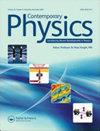空间天体测量学
IF 3.3
4区 物理与天体物理
Q2 PHYSICS, MULTIDISCIPLINARY
引用次数: 0
摘要
天体测量是对恒星精确位置和运动的测量,最早是在20世纪90年代由欧洲航天局的Hipparcos任务在太空中进行的。如今,随着欧洲航天局2013年启动的“盖亚”任务,它正经历着一个特别戏剧性的进展。我解释了为什么恒星位置在天文学中如此重要,并概述了该领域2000年的历史。这说明了过去几个世纪以来随着测量精度的提高而获得的深刻的科学见解,以及所涉及的技术和计算挑战。我解释了为什么为了推进这一领域,从太空进行测量是必要的,并概述了支撑这两个太空任务的测量原则。最后,我总结了最新的盖亚目录发布的内容,列出了盖亚迄今为止揭示的一些科学亮点,并在这个过程中,展示了这些测量是如何彻底改变我们对银河系起源、结构和演化的理解的。关键词:天体测量、恒星位置、恒星距离、恒星结构、星系动力学、shipparcosgaia感谢我对天体测量学历史的概述是基于我从2012年开始的更广泛的回顾[Citation1],而这又大量借鉴了Allan Chapman [Citation2]、David Goodman & Colin Russell [Citation3]和Alan Hirshfeld [Citation4]的研究。依巴可斯计划的早期历史在我的广受欢迎的任务报告《制作历史上最伟大的星图》中有更详细的描述。在我退休后,我对欧空局及其咨询机构承担这些开拓性任务表示感谢。我对欧洲工业的工程和管理能力深表钦佩,我与他们密切合作了近30年,以马特拉马可尼航天公司(图卢兹,后来并入空中客车防务与航天公司)为例,该公司是喜巴可斯的工业总承包商。空客防务与空间公司(图卢兹)也是盖亚的主承包商。最后,我对盖亚DPAC成员表示感谢和钦佩,他们是来自欧洲各地的约450名科学家,他们在非常大的时间压力下共同努力,提供了我们银河系21世纪的非凡视图。披露声明作者未报告潜在的利益冲突。michael Perryman在剑桥大学获得理论物理学学士学位,并在卡文迪什实验室获得射电天文学博士学位后,于1980年以博士后研究员的身份加入欧洲航天局。1981年,他被任命为欧空局Hipparcos的项目科学家,并领导该项目直到1997年完成,包括在发射后担任项目经理。他是盖亚任务的发起人之一,在2009年从欧洲航天局退休之前一直担任该任务的项目科学家。他曾任莱顿大学天文学教授(1993-2009),普林斯顿大学Bohdan Paczynski客座教授(2013),并自2013年起担任都柏林大学物理学院兼职教授。为了表彰他在空间天体测量学方面的开创性贡献,他获得了法国天文学会Jules Janssen奖,荷兰皇家艺术与科学学院的学院奖章,瑞典隆德大学的荣誉博士学位,欧洲天文学会第古·布拉赫奖,以及2022年邵逸夫天文学奖。本文章由计算机程序翻译,如有差异,请以英文原文为准。
Space astrometry
AbstractAstrometry, the measurement of accurate star positions and motions, was first carried out from space by the European Space Agency's Hipparcos mission in the 1990s. Today, it is undergoing a particularly dramatic advance with ESA's ongoing Gaia mission, launched in 2013. I explain why star positions are of such importance in astronomy, and outline the 2000-year history of the field. This illustrates the profound scientific insights that have been gained over the past centuries as measurement accuracies have advanced, as well as the technical and computational challenges involved. I explain the reasons why measurements from space became necessary in order to advance the field, and outline the measurement principles underpinning these two space mission. I conclude with a summary of the contents of the latest Gaia catalogue release, list some of the scientific highlights that have been revealed by Gaia so far and, in the process, demonstrate how these measurements are revolutionising our understanding of the origin, structure, and evolution of our Galaxy.Keywords: Astrometrystar positionsstar distancesstellar structuregalactic dynamicsHipparcosGaia AcknowledgmentsMy overview of the history of astrometry is based on my more extensive review from 2012 [Citation1], which in turn drew heavily on the researches of Allan Chapman [Citation2], David Goodman & Colin Russell [Citation3] and Alan Hirshfeld [Citation4]. The early history of the Hipparcos project is given in greater detail in my popular account of the mission, The Making of History's Greatest Star Map [Citation5]. From my retirement armchair, I express my appreciation to ESA and its advisory bodies for taking on these pioneering missions. I express my deep admiration for the engineering and management capabilities of European industry, with whom I worked closely for almost 30 years, exemplified by Matra Marconi Space (Toulouse, subsequently subsumed into Airbus Defence & Space), as industrial prime contractor for Hipparcos. Airbus Defence & Space (Toulouse) was also the prime contractor for Gaia. Finally, I express my thanks and admiration to the Gaia DPAC members, some 450 scientists across Europe, who are working together, and often under very great schedule pressures, to deliver this remarkable twenty-first century view of our Galaxy.Disclosure statementNo potential conflict of interest was reported by the author.Additional informationNotes on contributorsMichael PerrymanMichael Perryman joined the European Space Agency as a postdoctoral research fellow in 1980, after an undergraduate degree in theoretical physics at Cambridge, and a PhD in radio astronomy at the Cavendish Laboratory. He was appointed as ESA's project scientist for Hipparcos in 1981, and led the project until its completion in 1997, including the role of project manager after launch. He was one of the originators of the Gaia mission, and was its project scientist until his retirement from ESA in 2009. He was Professor of Astronomy at Leiden University (NL, 1993-2009), the Bohdan Paczynski Visiting Professor, Princeton University (2013), and has been Adjunct Professor in the School of Physics, University College Dublin, since 2013. Amongst recognition for his pioneering contributions to space astrometry, he has received the Prix Jules Janssen of the French Astronomical Society, the Academy Medal of the Royal Netherlands Academy of Arts and Sciences, an Honorary Doctorate from Lund University in Sweden, the Tycho Brahe Prize of the European Astronomical Society, and the 2022 Shaw Prize for Astronomy.
求助全文
通过发布文献求助,成功后即可免费获取论文全文。
去求助
来源期刊

Contemporary Physics
物理-物理:综合
CiteScore
2.90
自引率
5.00%
发文量
18
审稿时长
>12 weeks
期刊介绍:
Contemporary Physics presents authoritative and lucid introductory review articles on important recent developments in physics. The articles are specially commissioned from experts in their field. The authors aim to review comprehensively the current state of their subject and place it within a broader context of contemporary research, industrial possibilities and applications in an accessible way.
The Journal is of particular use to undergraduates, teachers and lecturers and those starting postgraduate studies who wish to be introduced to a new area. Readers should be able to understand the review without reference to other material, although authors provide a full set of references so that those who wish to explore further can do so. The reviews can also be profitably read by all those who wish to keep abreast of the fields outside their own, or who need an accessible introduction to a new area.
Articles are written for a wide range of readers, whether they be physicists, physical scientists or engineers employed in higher education, teaching, industry or government.
Contemporary Physics also contains a major section devoted to standard book reviews and essay reviews which review books in the context of the general aspects of a field.
 求助内容:
求助内容: 应助结果提醒方式:
应助结果提醒方式:


